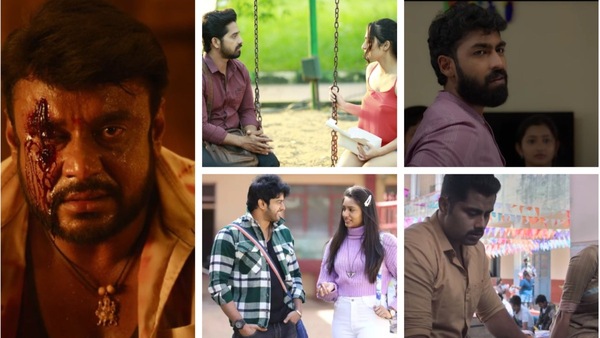OTT rentals is a new avenue and will be the future, says content aggregator Shachina Heggar
Is Kannada cinema getting a raw deal from OTT platforms or is there a problem at a more ground level. Content aggregator Shachina Heggar elaborates

Last Updated: 03.38 PM, May 11, 2024
The general perception in Kannada cinema, or at least what filmmakers present, is that not only are there barely any takers for films from the industry as far as satellite and digital rights go, but those that do engage, like, for instance, Amazon Prime Video, doles out step-motherly treatment. The contention is that the streamer does not entertain a lot of filmmakers and when they do, the payment modules are abysmal. If one talks to filmmakers who’ve had a release or two in recent times, most sound disgruntled. They all want to be on the streamer, but they are not happy with the outcome.
From the days of direct purchases of films for hefty amounts, to hybrid deals with some money and then pay-per-view revenue, to now, only allotting rental only views – things are rapidly changing and for an outsider, this may seem like a steady decline for the Kannada industry. But is it really? OTTplay spoke to Shachina Heggar of Flat Curve Studio, a leading content aggregator, who deals extensively with Prime Video about this.

Kannada content on Prime – here’s how it works
Prime takes movies in four ways - One is acquisition; right now, they are taking some movies on hybrid model, there is a value fixed for the exclusive deal of, say, 6 months or 1 year. After that, you can continue to use their platform, or you can also sell anywhere else. Next comes PVD, where you get Rs 4 per hour, which can go up to Rs 6 rarely. There are also catalogue movies, which are slightly older and get a lower rate, maybe Rs 2- Rs 3 and then comes TVOD (rental), which is relatively new in India.
With pay-per-view, that money has to come to Prime from somewhere to give you as a vendor. Now, Kannada subscribers, let’s say they have 10 and get Rs 1,000 from each of them every month. There are only a finite number of films that can be picked up for that money. The thing is that people are not buying subscriptions to see a particular Kannada film. PVD movies are for those who already have a subscription and there is a budget allocated for that. If it is something that is definitely going to bring in subscriptions, then it is a different case and that’s where acquisition comes in, like in the case of Kantara: Chapter 1. They may or may not get the desired result, but that’s a risk they have taken. With rentals you will actually get to know how many people are actually watching Kannada cinema.
‘Kannada filmmakers approach Prime as a last resort after exhausting other options’
Prime is very clear that it takes 2-3 weeks to respond about any film and those who know this go to them well in advance. I send my movies even before the theatrical release. For some reason, everyone here (Kannada cinema) is under the notion that Prime Video is out there to cheat them. It is not like that; you need to send your films in advance, which allows them to decide whether they want to acquire or offer any other deal. For instance, right now, there are two film teams that have come to me after one month of their theatrical release, after going around everywhere trying to sell the film’s satellite rights. Everyone knows that TV channels will not engage if the digital rights are not available. They want it as a bundle deal – both satellite and digital.
So, film teams hold on to the rights until the TV channels either buy the rights or reject it. It is only when they are rejected that they look at the next option, which is the Prime Video Direct (PVD) or pay-per-view. When they have no other option, they turn to this and then expect everything to be done in record time. It doesn’t happen like that; there’s a process to it, including quality control. You have to upload your content on to a software for QC; no one is vetting your film. This QC is a 12-15 day process, which everyone knows and they still don’t do anything about it. They will come in the last minute, like, maybe for a festival and say, ‘Put it out tomorrow for the festival’.
The Kannada film industry, in my opinion, is not used to dealing with the corporate culture. Prime Video, for instance, does not encourage any conversation over the phone or WhatsApp; everything has to be on e-mail. And for people who are used to sitting across a table and hashing out deals in a few sentences, this is novel. So, when a corporate enters into such an unorganized sector and attempts to make it organized, people are shaken.
Having said that, I must add that I often end up fighting for the cause of Kannada cinema, but I understand that they are also operating with a limited team and do take time to respond, which they are very clear about. Keeping this in mind, I have already sent them a movie that I am handling, which is ready, but does not have a release date set yet. Since they have watched the film, they are willing to engage in a conversation as soon as it releases in theatres. They will know what decision to take. And that is why we have been able to consistently take movies live on the platform within 28-days or 60-days of the release. Most Kannada filmmakers do not want to show their films to Prime in advance; instead, they want to be trusted blindly and given a handsome lumpsum.

‘Kannada industry does not take accountability’
We have contributed very strongly to ruin the market here. We mislead corporates. For instance, I have teams asking me to somehow put their films on Prime Video and that they will then go all out and promote the same. I would have then approached them with the assurance that they will get a certain subscription base from this, because of, say, the star cast and that the Prime release is going to be publicized widely. There will be people who will come to watch the film and then maybe stay on as subscribers. But no one lives up to their word; there is no accountability for the responsibility at their end.
Prime Video is still one of the few platforms that is still consistently buying, or at least paying people for their movies. It is a little unfair that the Kannada film industry is playing the victim card. At the end of the day, stakeholders in Sandalwood have to understand that it is a company that is here to do business; it’s not a charity organization.
Also, when it comes to acquisitions, teams put out unrealistic figures, which gives others hopes that the platforms are willing to shell out that kind of money. The reality is something else, and the industry needs to set its expectations right. Inflated figures ruin the market.
Payment for total views?
When the report is sent to an aggregator or producer, it details the total streamed minutes and the unique views; there is a daily break-up as well. They pay for the total number of minutes that have been viewed. These numbers that film teams claim to have managed in terms of total minutes streamed, well, I have no comments. If they are really doing so well, shouldn’t the industry be happy?
Rentals for regional cinema is a new avenue
Rentals for regional movies was not available earlier, but has been opened now for two reasons. One, they want to have movies for a larger catalogue, but they can’t take them because there is no revenue.
There is a cost that comes with even saving a film on a server, which, as a company, they have to recover. If people are not watching enough for me to do that, how am I going to keep those movies or why will I keep it there. It’s the same as a retail store; if a product is not moving, it will be removed from the shelf.
Personally, I think rentals have been opened up as an option because some of the bigger Hollywood movies want to be on multiple platforms in non-exclusive deals. If they give it only to Prime Video, they lose out on the audience on other platforms. With rental, you can have your film on all platforms. For instance, Mr Natwarlal is currently on Prime Store and will soon be on BookMyShow Streams, Apple TV and a few others.
Content strategy shifting
I have often told Prime Video that the kind of movies they have been taking are the first-day-first-show kind; they are not going to bring them subscription. If I have to take an annual subscription for Rs 1,400, I won't do it for just 10 films. If I am a purely regional content viewer and take a Zee or Voot subscription, I will get a lot more content for much less money. Then, it doesn't make sense to take a Prime subscription for the 4-5 films they have. Those, I will probably watch in theatres, like a Kranti or a Kabzaa. The audience for those kind of films will not wait a month or two for it to come to OTT. But the platform ends up paying a major chunk of its budget on films like that and then says they don't have subscriptions. It's a catch 22 situation and I have made it clear to them that outside of, say, Bengaluru or Mysuru, platforms like Zee5 and Voot have a bigger market share.
